
What is the problem?
Last year, the harvest report for Kherson contained many blank spaces. Half of the region is still occupied by the Russian army. On November 11, 2022, Kherson's right bank was liberated from occupation, and farmers and entrepreneurs were optimistic about the chance to resume business. Instead, new problems awaited them.: some returned to their fields to find them littered with landmines – others to discover agricultural machinery damaged or stolen, or collection notices from banks for repayment of loans — all while Russian forces continue to strike the area from just across the river.
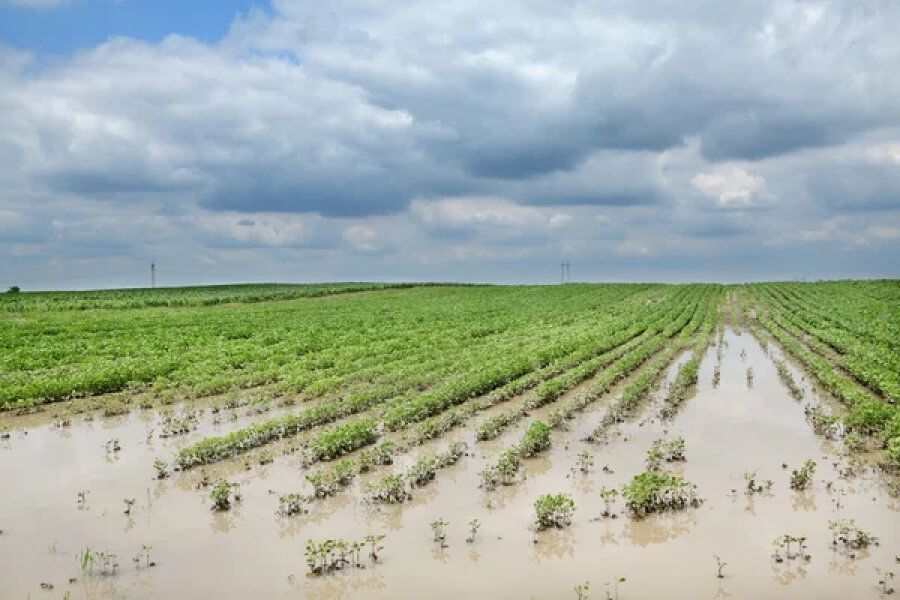
In the Kherson region alone, 25,000 hectares of fields were flooded, and 100,000 tons of crops were lost due to disaster at the Kakhovka Dam.
On June 6, the Russians committed an act of ecocide that has been called the largest man-made disaster of the 21st century.
What are the consequences?
According to data from Ukraine's Ministry of Agrarian Policy, 25,000 hectares of fields were flooded in the Kherson region alone, and 100,000 tons of crops were lost. Farmers of the Mykolaiv region were also affected by flooding: 1,050 agricultural lands were covered with water, and commercial losses due to crop failure amounted to ₴20 million as of June 2023.
Flooding and crop loss are only the tip of the iceberg. After the reservoir's destruction, several regions remained without irrigation. If measured in numbers, 31 irrigation systems were destroyed, and approximately 30% of fields in Dnipropetrovsk, 94% in Kherson, and 74% in Zaporizhzhia regions were left without water.

Destroyed machinery, fields filled with mines, debts piling up, and crop loss due to flooding — this is what the farmers of the south of Ukraine faced in 2023.
Much more land is likely to remain out of use, due to how agricultural entrepreneurs in Ukraine allocate funds, according to Deputy Minister of Agrarian Policy Vitalii Golovan. In the past, farmers benefited from irrigated land and thus covered other unprofitable crops in rotation.
"Having lost the opportunity to irrigate the land, over the next three to five years, one and a half million hectares of land, which were sown at this expense, will be empty," Golovan noted.
What will this lead to?
EastFruit analysts noted that water from the irrigation system made it possible to grow up to 80% of all vegetables in Ukraine and a significant percentage of fruits and grapes. Practically all heat-loving fruits of Ukraine were grown thanks to irrigation from the Kakhovka reservoir. The main capacities of summer greenhouses, which provide the population of Ukraine and Moldova with affordable tomatoes, eggplants, cucumbers, and peppers, were also located along the branches of the Kakhovka irrigation system.

The Kherson region had the largest number of greenhouses and not only supplied vegetables to the Ukrainian domestic market, but also imported them to Moldova. Now, the region is at risk of losing this sector.
According to Taras Vysotsky, head of Ukraine's agrarian ministry, it is impossible to talk about the cultivation of vegetable products at all without a water supply. Still, grain and oil crops will be cultivated, albeit with low productivity.
However, Ukrainian farmers are finding ways out of this situation by turning to traditional methods of survival, based on the principle of association and joint action.
What is the solution?
Temporary solutions that can become permanent
The cost of the partial restoration of the irrigation system in the Kherson region has already been estimated at ₴100 million, according to Dmytro Yunusov, acting director of the department of Agriculture and Irrigation of the Kherson Regional State Administration.
"In the short term, it is possible to restore irrigation on the right bank of the Kherson region with an area of over 25,000 hectares. These are areas located on the territory of seven communities of the Kherson region: Chornobayivska, Stanislavska, Bilozerska, parts of the Khersonska, Muzykivska, Darivska and Tyaginska communities," said Yunusov.
First of all, this is the restoration of pumping stations that were destroyed by shelling and flooding. However, there is a problem — water must be taken from the Ingulets River, which, according to Yunusov, is very salty. And yet, this comment was made public on July 19 — two weeks after the results of the State Inspectorate's analyses were published, indicating rapid river desalination. So, the salinity of Ingulets is only a temporary phenomenon.
Also, the acting director of the department of Agriculture and Irrigation reported that entrepreneurs switched to crops that can be used without irrigation.
"These are wheat, barley, rapeseed, and sunflower. Farmers completely abandoned soy. Today, irrigation still remains. In the Chornobayivska community, one of the entrepreneurs planted corn on 40 hectares. And he has some irrigation there, which he can use from the Ingulets irrigation system," says Yunusov.
While the official says that farmers are adapting, many crops must be abandoned. And here already, other farmers are talking about the rainfed type of farming.
Rainfed agriculture is a solution
Kherson region is an arid region where the soils are light and sandy. Without additional irrigation, it is simply impossible to grow those crops that have traditionally been grown in the south of Ukraine since the creation of the irrigation system. Given the gradual climate change, it won't get any better. The area is characterized as very dry, where precipitation is the lowest in Ukraine.
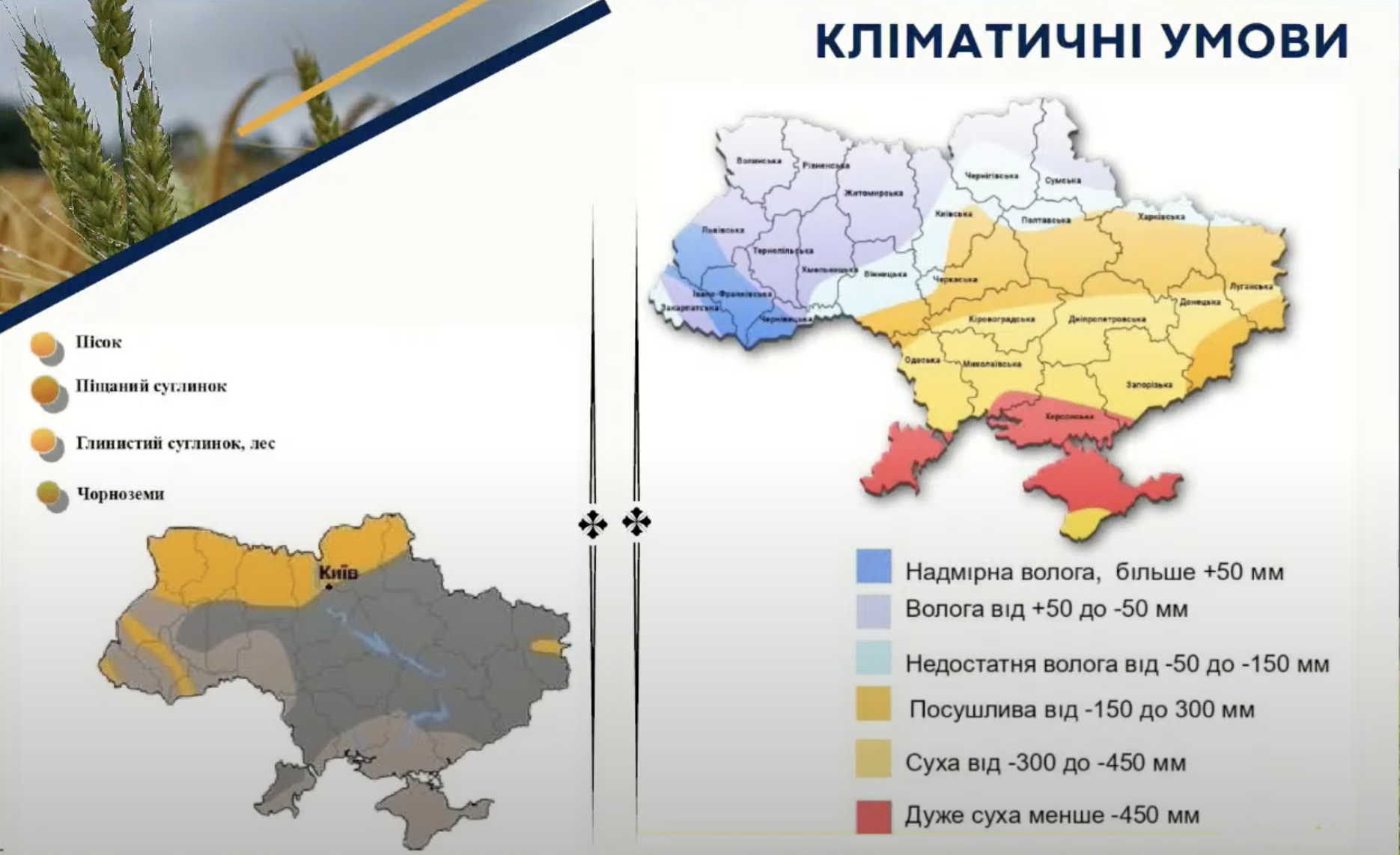
Screenshot from the presentation of Alla Stoyanova, director of the department of Agrarian Policy, Food and Land Relations of Odesa regional military administration at the Land Reclamation Forum. Source: II Reclamation Forum
However, many countries with semi-desert or desert areas — in the south of Kazakhstan, in the countries of Central Asia and Armenia — are engaged in rainfed agriculture. Its principle is based on:
- lack of irrigation,
- cultivation of drought-resistant grain, fodder, and melon crops.
Ukrainian farmers already see a new perspective in rainfed agriculture. Thus, in an interview with the Latifundist media, Vadym Dudka, the founder and director of the consulting vegetable company of Ukraine Agroanaliz, said that several crops could be safely grown in the south using rain water. Many crops – such as sunflower, winter wheat, winter rape, and spring barley – can be profitable even in the Kakhovka and Oleshkivskyi districts, where the soil is sandy.
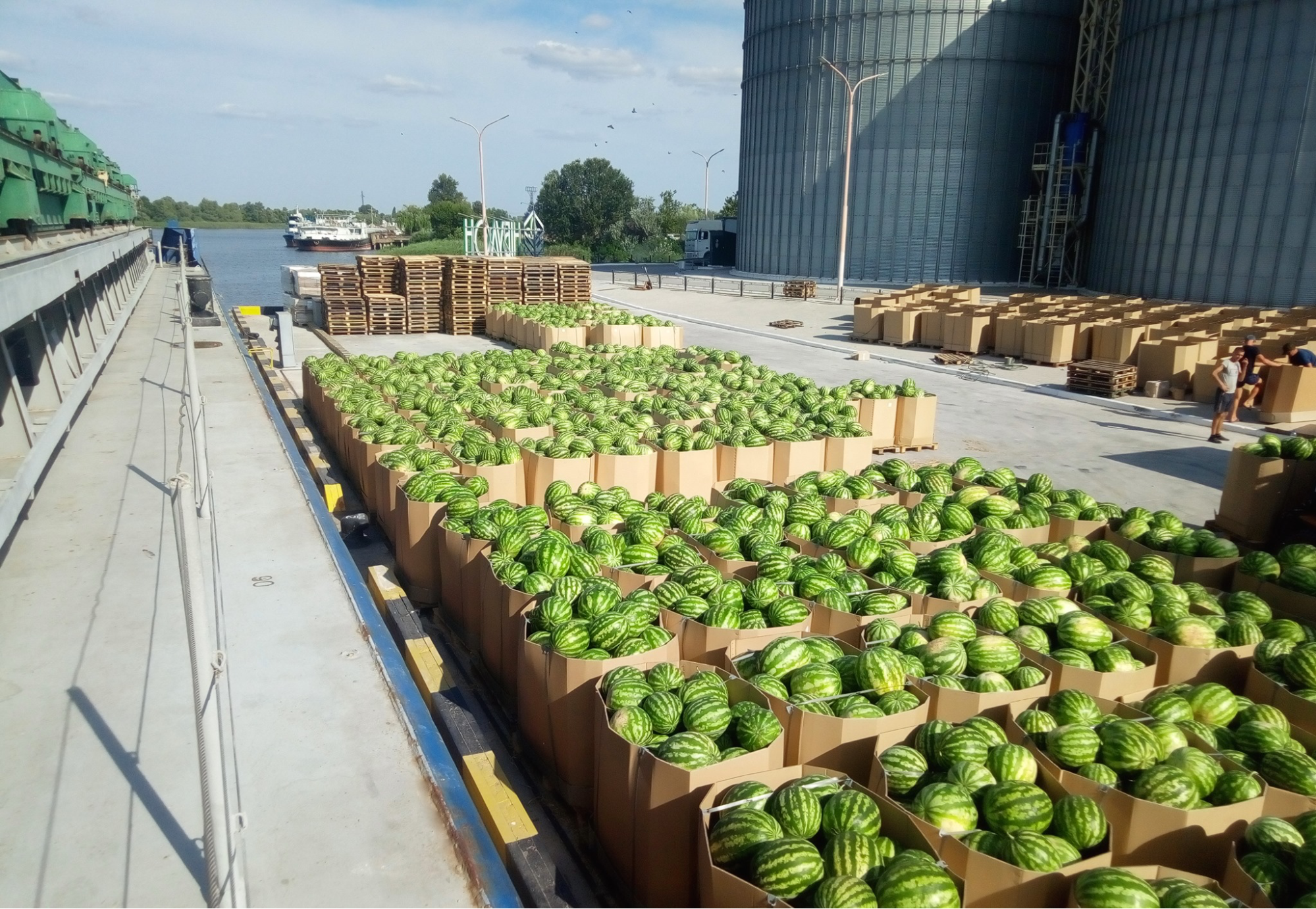
It used to be a Kyiv tradition to greet the harvest a barge full of Kherson's famous watermelons before the full-scale war. Currently Ukraine is supplied with watermelons by the Odesa region.
According to Dudka, it is even possible to find certain advantages in this — for example, improving the condition of the soil, because the constant cultivation of vegetables, soybeans, and corn, which was carried out in the Kherson region, leads to the depletion of the soil, the accumulation of fusarium and other diseases.
Under such a transition, of course, corn and vegetable crops will decrease, but even here, adaptation to the new system is underway. According to the department of Agrarian Policy, Food and Land Relations of the Odesa Regional Military Administration, Ukraine was supplied with vegetables and watermelons this year by the Odesa region, where farmers began to show interest in changing the structure of crops to avoid shortages.
In fact, this region now has the most significant amount of irrigated land — 226,000 hectares, of which 42,000 hectares are actually irrigated — partly thanks to 3,000 hectares of newly irrigated land, which appeared thanks to irrigation reforms and the increase in reclamation areas — new land from oceans, seas, riverbeds or lake beds.
What is this reform, and why do farmers who unite have a better chance of survival?
In May 2022, a new law entered into force, which gives water users the right to unite and jointly manage canals, pipelines, and pumping stations that supply water to fields for irrigation. This enables agricultural producers to come together to form an organization of water users (OWU) which can independently maintain and modernize the irrigation system, invest independently in irrigation and attract investments.
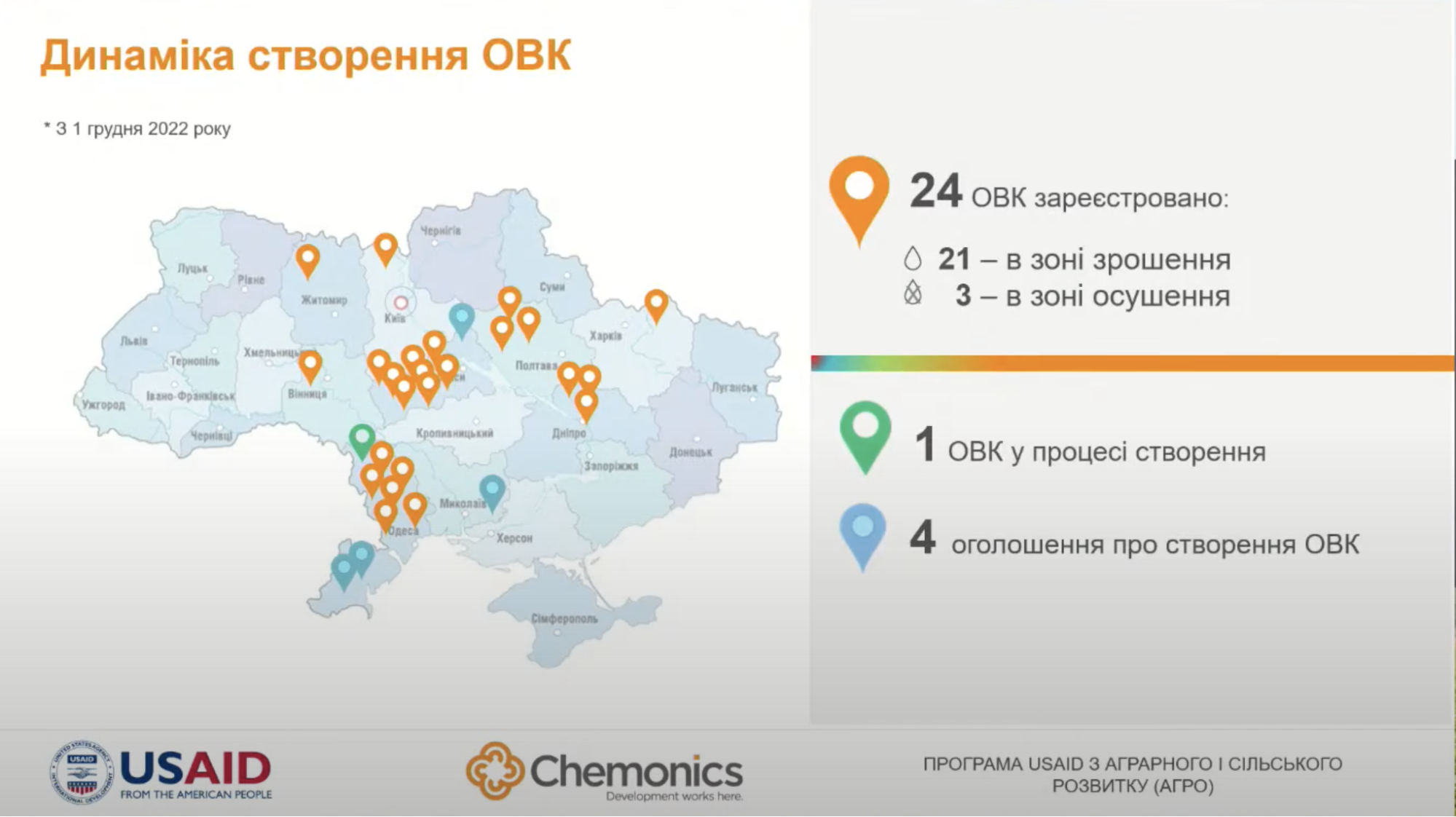
The dynamics of the establishment of organizations of water users (OWU) in Ukraine from December 1, 2022. Screenshot from the presentation of Serhii Kubakh, head of the land reform department at the Land Reclamation Forum. Source: II Reclamation Forum
As of July 2023, 24 OWUs have already been created in Ukraine, six of them in the Odesa region. Serhii Kubakh, the head of the land reform department, considers creating the OWU system one of the solutions that can help farms survive after the Kakhovka hydroelectric power plant dam was blown up.
The agricultural company ATF Agro-Dilo, which is a member of the Inguletska OWU, which is common to the Mykolaiv and Kherson regions, has already managed to restore water supply after the Kakhovka disaster. The water supply for irrigation has already been restored, despite the catastrophic consequences of the destruction of the dam of the Kakhovka reservoir, particularly the uncontrolled overflow of the Ingulets River,. Thanks to the high professionalism of the Ingulets River Canal Management staff, it was possible to save the pumping equipment and auxiliary electrical equipment of the main pumping stations of the Inguletsoka and Yavkynska irrigation systems.
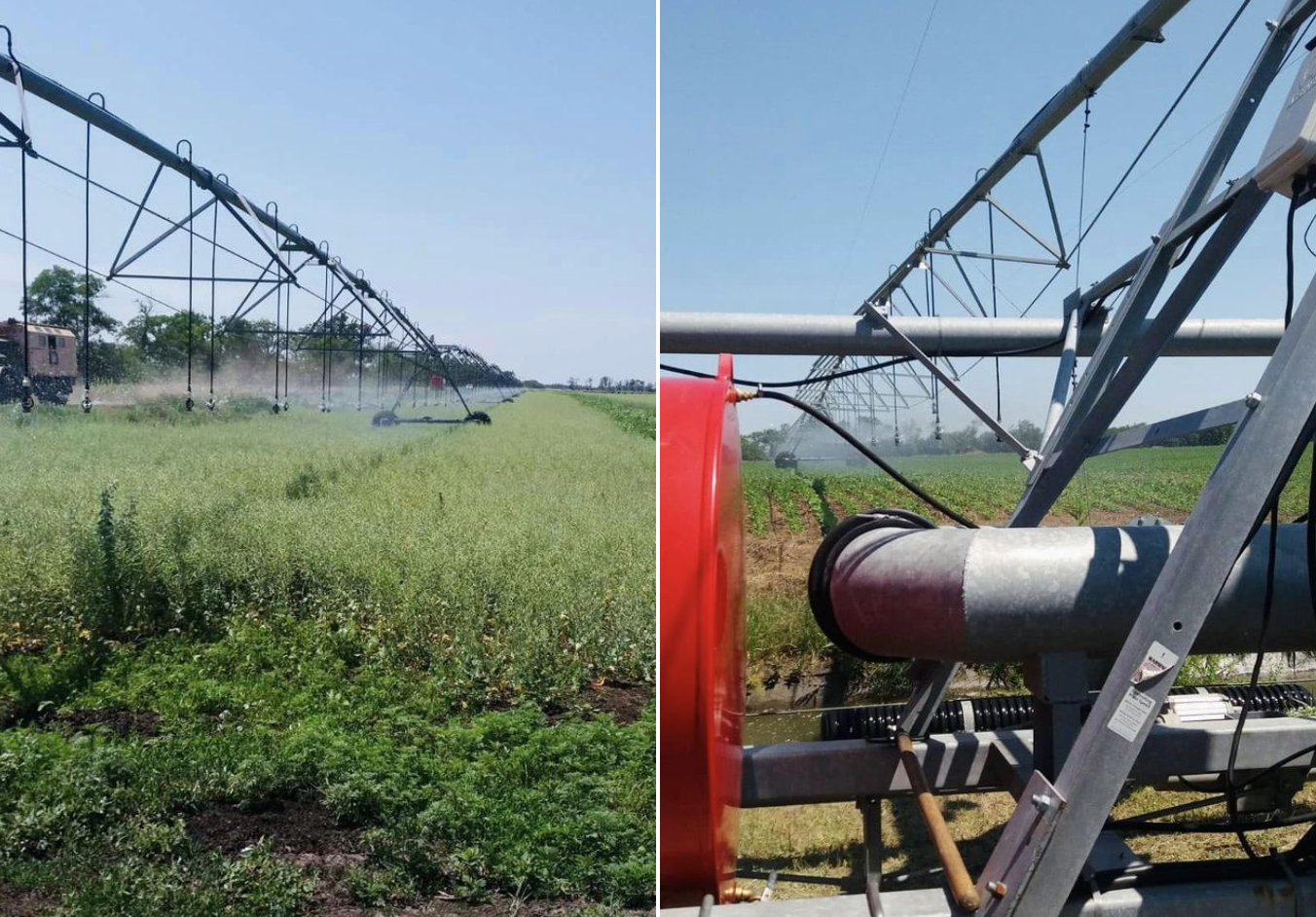
The irrigation system in the fields of Agro-Dilo OWU in the Mykolaiv region was restored. Source: Facebook page of the enterprise
That is why the solution for farmers may be to join an OWU – because registered participants can receive grants for the modernization of irrigation systems. One of the donors is USAID, which in 2019 launched the seven-year AGRO project to support Ukrainian farmers. Thus, in July, the Persha OWU in the Cherkasy region and the Voda Zhittia OWU in the Odesa region became winners and received sub-grants to modernize hydrotechnical melioration systems.
The project "Restoration of the territories of southern Ukraine after the destruction of the Kakhovka reservoir" was created with the participation of CFI, the French Agency for the Development of Mass Media, within the framework of the Hub Bucharest project, with the support of the Ministry of Foreign Affairs of France.
Newsletter
Digest of the most interesting news: just about the main thing







